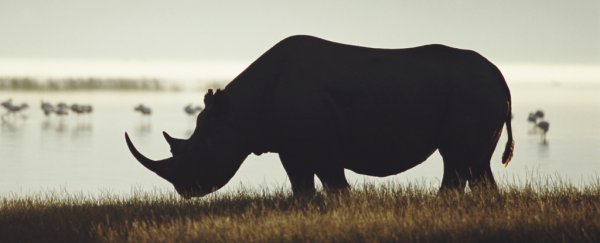There are not as many of us as there used to be. Hundreds of unique, precious species of animal life vanished forever last century.
This is what a mass extinction looks like, scientists warn, but that's not even the worst part.
The mass extinction phenomenon currently underway on Earth is actually accelerating, researchers now say, with the vast toll of vertebrate extinctions seen in the 20th century set to be repeated – but this time, it may take just decades for hundreds more species to disappear for all time.
As each domino falls, the knock-on effects for adjacent species become ever more risky, with destabilised ecosystems and weakened food webs making survival for any species – including humans – less assured.
"What we do to deal with the current extinction crisis in the next two decades will define the fate of millions of species," explains ecologist Gerardo Ceballos from the National Autonomous University of Mexico.
Five years ago, Ceballos led a study that used conservative estimates to reveal the massive discrepancy between ordinary ('background') rates of species extinction and the spate of die-offs we see today.
It found the average rate of vertebrate species extinctions (two mammal extinctions per 10,000 species every 100 years) was drastically less than today's extinction toll, which is up to 100 times higher over the last century.
This, the team said, effectively showed that a mass extinction phenomenon is unfolding right now, due to "incontrovertible" evidence that recent extinction levels, themselves unprecedented in human history, are highly unusual in Earth's history.
"We can confidently conclude that modern extinction rates are exceptionally high, that they are increasing, and that they suggest a mass extinction under way – the sixth of its kind in Earth's 4.5 billion years of history," the team wrote in their 2015 paper.
Now, Ceballos and his collaborators are back with another study, and their new insights are not any more optimistic.
This time around, the researchers say future rates of extinction have probably been underestimated up to this point, with the rapid rates of vertebrate extinction we're already witnessing expected to increase sharply in the future.
In the study, the team used data from the IUCN Red List of Threatened Species and Birdlife International to examine populations of vertebrate animals considered to be on the brink of extinction, having lost most of their geographic range, and now consisting of fewer than 1,000 living individuals worldwide.
According to the researchers, 1.7 percent of assessed terrestrial vertebrate species – 515 species in total – fit this description, with about half having fewer than 250 survivors.
An additional 388 species fare a little better – with populations ranging between 1,000 and 5,000 individuals – but the team says 84 percent of these animals live in the same regions as the 515 species on the brink of extinction, which suggests they are likely to be exposed to the same geographical threats, in terms of things like destabilised ecosystems due to disrupted food chains, deforestation, pollution, or other myriad other human pressures.
"Close ecological interactions of species on the brink tend to move other species toward annihilation when they disappear – extinction breeds extinctions," the researchers write.
These 'extinction cascades', triggered by the loss of certain keystone species within ecosystems, are a well-known phenomenon in ecology, and because so many kinds of animals are on the verge of being on the brink of extinction, the mass extinction could be happening sooner than we had anticipated, because when animal populations get pressured to such extreme extents, they generally don't last long.
"Around 94 percent of the populations of 77 mammal and bird species on the brink have been lost in the last century," the team writes.
"Assuming all species on the brink have similar trends, more than 237,000 populations of those species have vanished since 1900."
If the 515 species on the brink only last for another few decades, which the researchers speculatively estimate, then, combined with the 543 vertebrate species known to have gone extinct since 1900, extinction rates would be 117 times higher than the background rate – higher than the researchers' own estimates five years ago, suggesting we've previously underestimated how fast this process is happening.
It's not too late to slow this, the researchers say, if we take action to ease human pressures on the biosphere. This could be by implementing broad bans on the trade of wild species, slowing deforestation, and recognising all animal populations of less than 5,000 as critically endangered.
Whatever we do, we have to realise that this isn't just the fate of other animals we're talking about here.
"When humanity exterminates populations and species of other creatures, it is sawing off the limb on which it is sitting, destroying working parts of our own life-support system," says one of the researchers, biologist Paul Ehrlich from Stanford University.
"The conservation of endangered species should be elevated to a national and global emergency for governments and institutions, equal to climate disruption to which it is linked."
On that note, other scientists agree it's possible to mitigate this huge problem – which the team says is probably the most pressing environmental issue facing living things – but only if we really work to prioritise a fix, rather than look the other way.
"The tragedy of all of this is that we have the knowledge to save species from extinction, and doing that is cheap in a global context," says ecologist Chris Johnson from the University of Tasmania in Australia, who wasn't involved in the study.
"But this task is just not given enough priority by society and governments."
The findings are reported in PNAS.
